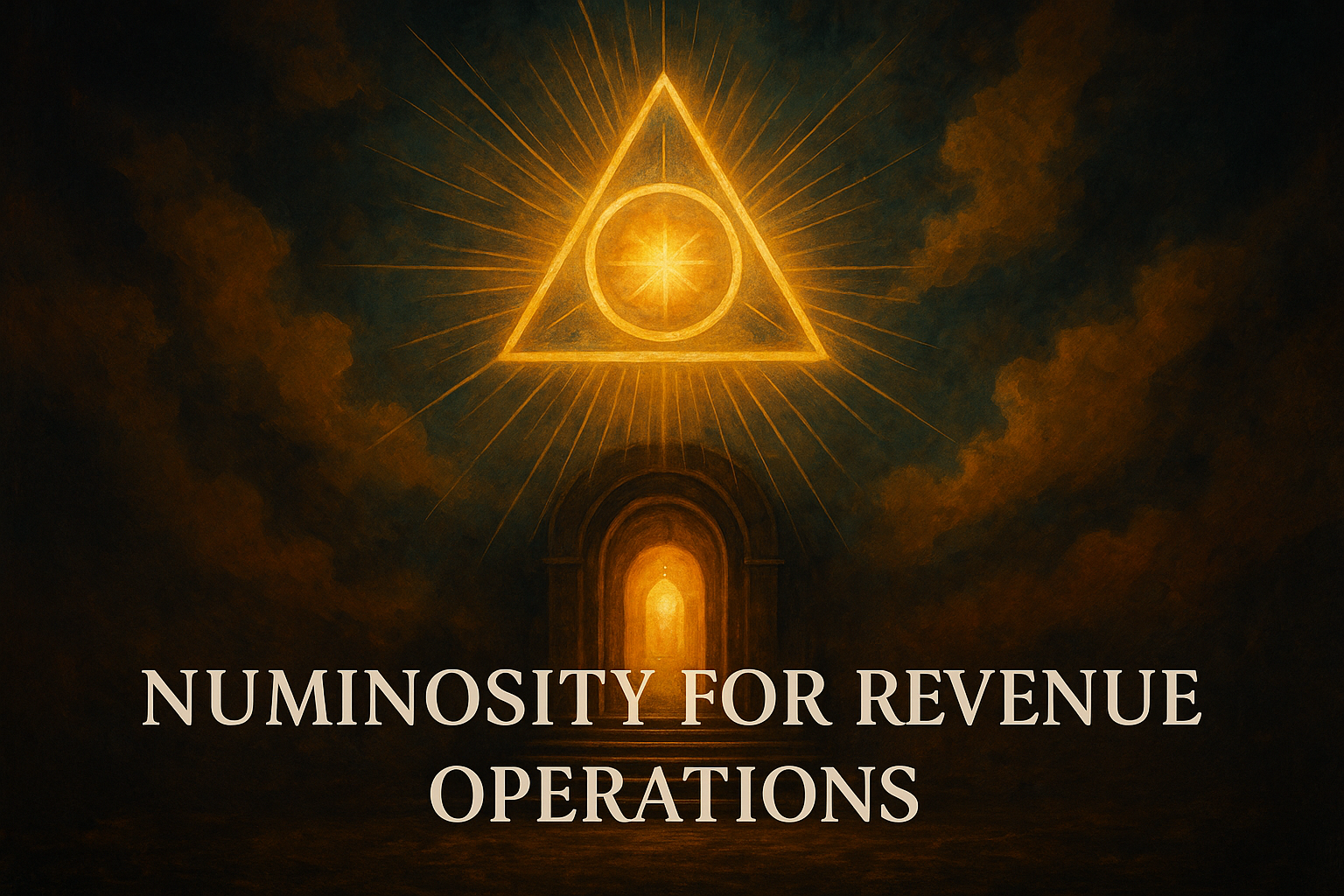In the spreadsheets and CRM dashboards of Revenue Operations, we don’t often talk about the sacred. We talk about pipeline, quotas, ARR, funnel velocity. We measure everything that can be tracked — and chase optimization like a modern priesthood of efficiency. But every once in a while, something different happens.
A moment clicks.
The fog lifts.
The data speaks.
That moment — when something clicks into place, when the numbers stop being noise and start whispering clarity — that’s what theologians and mystics might call the numinous.
👁 What Is Numinosity?
Coined by theologian Rudolf Otto, the term numinosity describes the uncanny feeling of being in the presence of something vast, powerful, and meaningful — something greater than yourself. It’s that spine-tingling mix of awe and reverence, the sense that this matters, and you didn’t build it… you just found it.
In Otto’s framing, it’s mysterium tremendum et fascinans — terrifying and fascinating at once. Sacred.
So what does that have to do with a QBR?
More than you’d think.
🔍 The Numinous in Revenue Operations
RevOps is usually cast as rational, precise, and grounded in metrics. But those of us who live in it know it’s also messy, ambiguous, and full of mystery. Our job isn’t just to count things — it’s to make meaning out of chaos. To find the signal in the noise.
And when we do, something happens.
Here’s where RevOps and numinosity touch:
1. Pattern Recognition as Modern Divination
In the old days, people read entrails or tea leaves. Today, we run cohort analysis and funnel diagnostics. But the impulse is the same — to read the signs and translate them into insight.
When a buried metric suddenly reveals a powerful truth about your ICP, that’s not just clever — it’s revelation.
2. Sacred Structure
The best RevOps systems aren’t just efficient — they’re elegant. There’s an almost spiritual satisfaction in a comp plan that aligns behavior perfectly, or a territory map that just feels fair. These aren’t just processes; they’re rituals of coherence. Sacred geometry in spreadsheet form.
3. Liminal Moments
RevOps is full of liminal spaces — the pause before the board meeting, the moment a forecast locks in, the second a dashboard loads with fresh data. These are threshold moments — not unlike dawn or dusk — where potential energy crackles.
A good RevOps leader doesn’t just manage time and tasks. They learn to listen to these moments.
4. Reverence for the Truth
Behind all the systems, the best ops people carry a quiet reverence — not for tools, but for truth. For clarity. For knowing that buried in the data is something real that wants to be found. Something that could make things better for reps, leaders, customers.
And when it’s revealed, there’s often a moment of silence — a breath — like a priest lifting the veil.
🧠 So What?
This isn’t just poetic. It’s practical.
RevOps professionals who embrace this mindset:
- Build more meaningful systems
- Craft better stories from data
- Cultivate a deeper sense of purpose
- Avoid burnout by tapping into something larger than KPIs
The numinous doesn’t replace the metrics — it animates them.
⚙️ Ways to Cultivate Numinosity in Your Ops Work
- Design dashboards with reverence — don’t overload them. Protect the sacred space of clarity.
- Treat data review as ritual — begin with intention. What are you truly seeking?
- Celebrate “click moments” — when the fog clears, honor it. That’s not just insight — it’s grace.
- Get outside the tools — walk, breathe, think in systems, not just tech stacks.
- Reconnect the human — every metric is a decision. Every graph, a behavior. Every conversion, a person.
🎯 Final Thought
Most people think of RevOps as left-brained work. And yes — it’s analytical, structured, precise. But the best operators I know also have an instinct — a sense for when things are off, or when something beautiful is trying to surface.
That sense isn’t just skill.
It’s a kind of sacred attention.
And if you start to listen for it — in the data, in the team, in the silence between insights — you might just find yourself on the trail of something bigger.
Something numinous.

